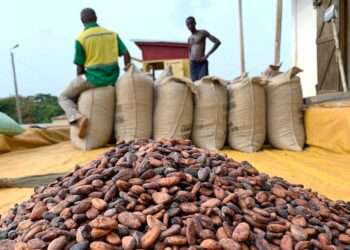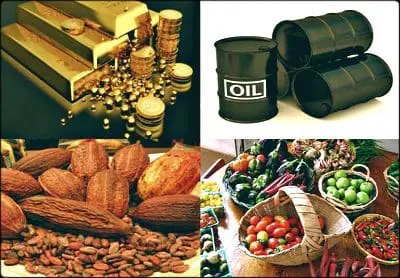The Ministry of Food and Agriculture (MoFA) has announced a major intervention to address a potential grain glut in the 2025 farming season.
With the country expecting a bumper harvest, alongside significant unsold carry-over stocks from 2024, the government has empowered the National Food Buffer Stock Company (NAFCO) with resources to purchase surplus grains from farmers for storage.
The Ministry emphasized that this measure is designed not only to protect farmers from the adverse effects of oversupply but also to secure national food reserves. The move marks the first time since the establishment of NAFCO that it has been resourced on such a scale to directly manage surpluses in the grain market.
According to the Ministry, the policy will serve a dual purpose: reducing the perennial challenge of post-harvest losses while also creating a buffer to safeguard the nation against future food shortages or emergencies.
“This intervention will not only reduce post-harvest losses but also guarantee the availability of food reserves to cushion the nation against future shortages and emergencies”.
Ministry of Food and Agriculture (MoFA)
The announcement comes amid heightened expectations of record harvests due to favorable weather patterns, expanded cultivation, and recent government support programs in agriculture.

While the news of a bumper harvest is welcome, it raises concerns over the capacity of the domestic market to absorb excess produce. Farmers, particularly smallholders, often face difficulties in selling their crops at fair prices during times of abundance, leading to wastage and financial losses.
NAFCO as a Stabilizing Force
To preempt such challenges, the government is positioning NAFCO as a stabilizing force. By purchasing surplus grains, the agency will ensure that farmers’ investments do not go unrewarded and that no harvest goes to waste.
The Ministry urged farmers to remain calm and confident, assuring them that NAFCO will be active in the market.
“The Ministry, therefore, urges all farmers to remain calm and confident, as NAFCO will actively be in the market to purchase their grains and mitigate any adverse effects of excess grains”.
Ministry of Food and Agriculture (MoFA)
The intervention also aligns with Ghana’s broader food security strategy. With growing concerns about climate change, global food supply disruptions, and domestic consumption needs, establishing a reliable reserve of staple crops has become a key government priority.

By building these reserves, the government hopes to shield the nation from unexpected shocks such as droughts, floods, or disruptions in global supply chains.
Reinforcing Confidence
Beyond food security, the policy is expected to reinforce confidence among farmers, encouraging them to expand production without fear of losses from gluts.
Agricultural experts have long highlighted the need for government interventions to stabilize markets, noting that post-harvest challenges remain one of the most significant obstacles to unlocking the full potential of Ghana’s agriculture sector.
Stakeholders in the agricultural value chain, including traders, processors, and transporters, are also likely to benefit from the move. With guaranteed markets for grains, ripple effects are expected across allied industries, stimulating rural economies and sustaining livelihoods.
The Ministry stressed that it is working closely with all relevant agencies and stakeholders to ensure the smooth rollout of the program.
“The general public is assured that MoFA, working with all relevant agencies and stakeholders, is fully engaged in ensuring that every grain produced by Ghanaian farmers finds a sustainable and profitable market”.
Ministry of Food and Agriculture (MoFA)
The development comes at a critical time when many countries across the globe are grappling with rising food insecurity, driven by a combination of conflict, climate change, and inflationary pressures on food systems.

Ghana’s proactive step, therefore, underscores the government’s commitment to safeguarding both farmers and consumers from the vulnerabilities associated with volatile food markets.
The success of the intervention will depend on effective logistics, timely payments to farmers, and the capacity of storage facilities. NAFCO’s existing infrastructure will need to be scaled up to handle the anticipated volume of grains, while coordination with local assemblies and farmer groups will be vital to ensure efficiency.
For farmers, however, the immediate priority is reassurance. Many have previously expressed frustration at the lack of market opportunities during bumper harvests, which sometimes force them to sell produce at distress prices or watch their efforts rot in warehouses.
This new measure, if effectively implemented, could change that narrative and signal a new era of agricultural stability.
READ ALSO: FDI Boom: Ghana Pulls in Nearly $1 Billion by Mid-2025, Beating All Expectations























